






 NARRATED BY MICHAEL BUBLÉ
NARRATED BY MICHAEL BUBLÉ
"Like so many families, I have been deeply affected by Alzheimer's, so I was thrilled to become a part of this film when I realized that there's hope, and it's not just a death sentence."
- Michael Bublé


BONUS Q&A, ONLY ON KNOWEWELL.COM, WITH Dr.



Therasage is the gold standard for energy healing, naturally healing infrared, negative ions and eliminating EMFs.
Therasage.com
Scan to register for educational webcast to learn more.


Sensiband is the simple, affordable, at-home self-test for metal allergies before joint replacement surgery.
Sensiband.com
Scan to register for educational webcast to learn more.


Founded in 1932, Boiron, the world leader in homeopathic medicines, is best known for its popular Arnicare® line of pain relievers and Oscillococcinum® flu reliever.
BoironUSA.com
Save 20% with code NA20


Now available on KnoWEwell.com.


OB/GYN-formulated with DHEA and Alpine Rose Stem Cells. Rejuvenates vaginal tissue, restores natural moisture, and helps prevent bladder leaks.
DrAnnaCabeca.com/ products/julva








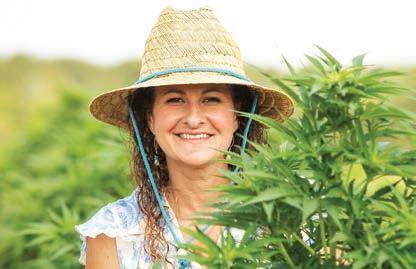










Publisher
Tracy Patterson, BSc, MES
Design & Production
Vegetorium, LLC
Copy Editor
Sara Gurgen, MS
Digital Platforms Hass Solutions Locable
Natural Awakenings – Phoenix 3260 N Hayden Rd, Ste #210 Scottsdale, AZ 85251
Tracy@NaturalAZ.com
NaturalAZ.com
CEO
Kimberly B. Whittle
National Editor Sandra Yeyati
Editor Brooke Goode
Copy Editor/Proofing
Melanie Rankin
Layout
Flip180 Media
Cover image
Oversnap from Getty Images Signatue/ CanvaPro
© 2024 by Natural Awakenings. All rights reserved. Although some parts of this publication may be reproduced and reprinted, we require that prior permission be obtained in writing. Natural Awakenings is a free publication distributed locally and is supported by our advertisers. Please call to find a location near you or if you would like copies placed at your business. We do not necessarily endorse the views expressed in the articles and advertisements, nor are we responsible for the products and services advertised. Check with a healthcare professional regarding the appropriate use of any treatment.

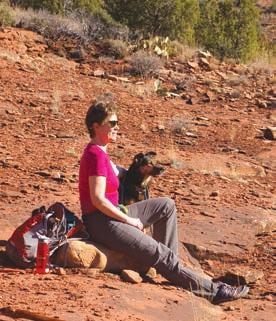
It’s hard to recall the first time I made a connection with nature, but the article in this month’s Inspiration department, on page 15, made me give it some thought.
Was it while playing with my stuffed toys at a very young age, most of which were wild animals like a fox and a koala bear, or perhaps the time I stood in a freezing cold mountain stream in the Rocky Mountains? Or was it while entertaining myself in the field at the end of our street, hiking or riding my horse out on trail rides?
I can’t pinpoint it, but looking back, I spent a lot of time outdoors from when I was very young, and a good portion of it in the wilderness. Of course, as a kid, even the ratty field at the end of the street was a wilderness, which I’m sure appeared much larger to my small self than it would today. It was a fun place to explore and study the natural world—every bug, plant and even the odd sighting of deer and coyotes. I was free to be creative with my thoughts, and I think this added to my connection with Mother Earth.
That relationship has grown over the years, and still today, I automatically live in places that I can be in nature every day, seven days a week, 365 days a year. The ecosystems may change from mountains to ocean to desert, but the key for me is to have easy access to the wilderness. And in accordance with the “eco” part of our theme this month, I try to keep my footprint to a minimum. For example, I stay on the designated trails to minimize impact on the environment, and I stay off certain trails entirely after heavy rain to help minimize erosion.
I’m happy that I grew up when I did and had the opportunity to create my own unique feelings about nature and my place in it.


Please note that all deadlines (advertising and editorial) are the 10th of the month prior to the edition being published. For example, April 10 is the deadline for all May edition submissions.


Purple Lotus Productions invites everyone to celebrate the season of renewal, rebirth and hope with family and friends at their next Embracing Your Journey Expo on Saturday, April 20, from 10 a.m. to 5 p.m. The popular, family-friendly recurring holistic, wellness and metaphysical event will be held at the New Vision Center for Spiritual Living, in Phoenix.
This will be an opportunity for attendees to expand their lungs as they walk the openair labyrinth and outdoor market; expand their minds as they explore free workshops throughout the day; and expand their consciousness with energy workers and other practitioners and vendors that support those on their mind-body-spirit journey.
There will be all-natural personal care items, health and beauty products, herbal remedies, sound and energy healers, psychics, mediums, chiropractors, alternative wellness providers, and so much more. With more than 40 vendors, there will be something for everyone.
In celebration of Earth Day, the first 50 paid attendees will receive a quality reusable green shopping bag filled with swag, gifts and coupons.
Cost: $5, kids 10 and under are free. Location: 18010 N. Tatum Blvd. For more information, including vendor profiles and lecture schedule, visit EmbracingYourJourneyExpo.com. To purchase tickets in advance, visit EYJE04202024.eventbrite. com. See ad, page 25.

According to a 2023 study by Yale scientists published in the journal Nature Neuroscience, two distinct neurodevelopmental abnormalities that arise shortly after the start of brain development have been linked to the emergence of autism spectrum disorder (ASD). The researchers created brain organoids using stem cells from 13 boys with the disorder, including eight with macrocephaly, a condition in which the head is enlarged. The organoids were small replicas of developing brains that mimicked neuronal growth in the fetus.
The study found that children with ASD and macrocephaly showed an excessive growth of excitatory neurons, while those without macrocephaly exhibited a deficit of the same type of neurons. Measuring the prevalence of certain types of neurons, as was done in this study, could help doctors diagnose autism and also identify which autism cases might benefit from existing drugs that treat excessive excitatory neuron activity.

San Mateo County near San Francisco is the first county in the U.S. to declare loneliness a public health crisis. The resolution, which commits the county to address the issue but does not set aside funds to reduce loneliness, was inspired by the United Kingdom and Japan, which appointed ministers to tackle the problem. Future efforts by San Mateo County may include investments in infrastructure to make neighborhoods more accessible, social media posts that encourage social interaction, and the earmarking of community mental health dollars for organizations that develop or offer solutions.
Loneliness has been associated with increased risk of dementia, depression, anxiety, heart disease and stroke. A British study found that those that lived alone and had no visitors had a 39 percent increased risk of premature death compared to those visited by loved ones daily.
A radical new approach to managing Type 2 diabetes developed by Daniel J. Cox, Ph.D., from UVA Health, has received $3.5 million in funding from the National Institutes of Health for a largescale clinical trial. The approach focuses on educating individuals about making wise dietary and exercise choices to control blood sugar and potentially alter the course of the disease. Rather than prioritizing weight loss or medication, it aims to reduce post-meal blood glucose levels, which are linked to cardiovascular risk and high levels of AIC, a marker of blood sugar over time.
Known as Glucose Everyday Matters (GEM), the approach combines educated food and drink selections with physical activity to prevent blood sugar spikes and hasten recovery if they occur. A small, initial trial involving 17 recently diagnosed adults with Type 2 diabetes showed promise, with 67 percent achieving remission after three months, and only one participant requiring medication. This trial was the first testing of self-administration instead of face-to-face delivery by medical providers.
This research offers promising hope for managing Type 2 diabetes through lifestyle interventions, providing patients with new options for controlling and potentially achieving remission from the disease. Cox’s personal success with the approach, maintaining consistently low A1C levels without medication for the past 13 years, further supports its potential.

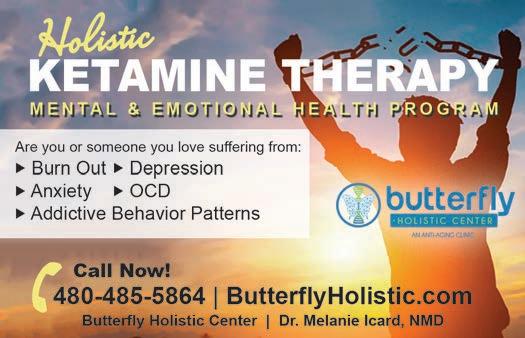

www.EckankarArizona.org


Deep below the icy expanse of the Arctic lies a hidden danger that could have catastrophic consequences for our planet. Layers of methane gas are trapped beneath the permafrost, and as the landscape changes, this sea of methane has the potential to be unleashed, wreaking havoc on the world.
Studying the permafrost beneath the islands of Svalbard, researchers found an immense reservoir of methane that could reach several million cubic feet. Currently, the leakage from below the permafrost is minimal, but glacial retreat and permafrost thawing could “lift the lid” on this hidden danger, according to Thomas Birchall, a geologist at Norway’s University Center in Svalbard and lead author of a study published in Frontiers in Earth Science.
Ocean currents can thin the permafrost, creating patchy and unpredictable regions. Geographical features can also allow gas produced by underlying rocks to escape. Even in areas with continuous permafrost, methane gas can migrate beneath the cold seal of the permafrost, creating the potential for escape.
A large-scale seepage would initiate a dangerous feedback loop of warming—a cycle where methane release leads to further permafrost thaw, resulting in additional gas emissions. While the focus of the study was on Norway, the researchers believe that migrating deposits of methane are likely present in other parts of the Arctic region as well.

Scientists at the BioRescue project have announced a breakthrough in embryo transfer that could save the northern white rhinoceros from extinction. According to the World Wildlife Federation, two genetically different subspecies exist—the northern and southern white rhino—found in two different regions of Africa. There are only two northern white rhinos left, both of which are female, living under protected housing in Kenya.
The BioRescue team achieved the world’s first rhino pregnancy through in vitro fertilization by implanting a southern white rhino embryo in a surrogate mother named Curra. Although the surrogate mother died after two months due to an unrelated infection, the successful embryo transfer offers proof of concept that this strategy could help save the northern white rhinos.
Plans are underway to implant a northern white rhino embryo into a southern white rhino surrogate mother. The scientists have used preserved sperm and eggs from the remaining females to make 30 preserved embryos. The BioRescue project has cost millions of dollars, supported by public and private donors. Eventually, the group hopes to reintroduce northern white rhinos into the wild.
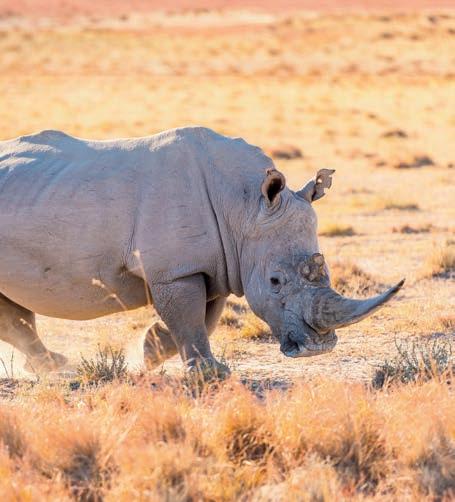
by Ronald Alexander, Ph.D., author of Core Creativity
According to New York Times bestselling psychiatrist Judith Orloff, M.D., empathy is a superpower that can transform your life, your relationships, and the world. In her new book, The Genius of Empathy (with foreword by the Dalai Lama), Orloff shows readers how to ignite and embody the emotional intelligence of empathy as a daily healing practice.
The Genius of Empathy shows readers ways to tap into the gift of their sensitivities without being drained. You will learn to soothe your nervous system and stop absorbing others’ emotions. It’s a practical, actiondriven guide for highly sensitive people and for those who want to develop empathy as a healing skill.
The book is divided into three sections. It begins with the magic of empathy to find greater self-love and healing—including from trauma. Subsequent chapters teach you how to apply empathy to your relationships, communities and the world. Exploring each chapter’s practices, you’ll learn the art of empathic listening, how to stop overthinking, and the importance of setting healthy boundaries and showing loving detachment to prevent overwhelm and compassion fatigue.
Throughout the book, psychiatrist and empath Orloff uses insights from neuroscience, psychology and energy medicine to teach

readers how to use and amplify their empathy without feeling overwhelmed. You’ll learn:
• What is your most comfortable empathy style.
• Techniques to enhance self-empathy and healthy giving.
• How to stop overthinking to prevent empathy burnout.
• How to set healthy boundaries in relationships, including if you are a caregiver.
• How to use empathic communication and leadership skills at work and in your personal life.
• How to show empathy for others even when you don’t like them or agree with them.
• How to recognize and protect yourself from people with “empathy-deficient disorder,” such as narcissists, sociopaths and bullies.

Each chapter has compelling anecdotes of how Orloff’s patients enhanced their lives with this book’s techniques. “Cultivating empathy is a kind of peaceful warrior training,” says Orloff. “You will learn to be both strong and loving, neither a pushover nor rigid. Wherever you are in your life, this book can meet you there and lift you higher.”
Dr. Judith Orloff has also written The Empath’s Survival Guide and Thriving as an Empath, which offer daily self-care tools for sensitive people. She integrates the pearls of conventional medicine with cutting-edge knowledge of intuition, empathy, energy medicine and spirituality. Orloff specializes in treating empaths and highly sensitive people in her private practice and online internationally. Her work has been featured on The Today Show and CNN and in Oprah Magazine, The New York Times and USA Today. Orloff has spoken at Google-LA, TEDx U.S. and TEDx Asia. For more information about Orloff’s Empathy Training Programs for businesses, The Empath’s Survival Guide Online Course, and speaking schedule, visit DrJudithOrloff. com. Join Orloff for a special book talk to learn empathic healing techniques at the Tempe-based Changing Hands Bookstore on May 30. Learn more at Tinyurl.com/ yupbrsmd.
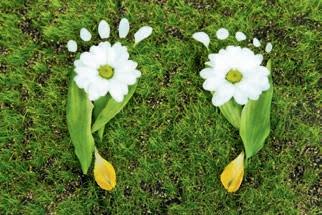
Our current systems and practices are depleting the Earth’s resources at an increasing rate well beyond its capacity to renew itself. According to the World Wildlife Fund, it takes a year-and-a-half to generate the resources we use in one year. That’s an unsustainable path for the planet’s future.
The world needs topsoil to grow 95 percent of its food, and yet the United Nations Food and Agriculture Organization estimated in 2019 that 90 percent of the Earth’s topsoil is likely to be at risk by 2050.
Such statistics seem daunting, but if each of us reduces their individual ecological footprint, together we can make a difference. Here is an action checklist. Consult it often and complete one action at a time. Think of incremental change as hope.
Plant a produce garden for homegrown sustenance.
Build a compost bin in the yard.
Shop at local farms and farmers markets.
Join a community-supported agriculture group.
Eat a meatless meal at least once a week.
Recycle paper, cardboard, plastic, glass and metals.
Use reusable water bottles.
Shop with reusable bags.
Buy organic and regenerative organic foods.
Buy local, sustainably sourced and packaged products.
Choose products with less packaging to reduce waste.
Take fewer and shorter showers.
Run the dishwasher only when it is full.
Fix leaks throughout the house.
Buy natural-fabric clothing; avoid synthetic garments.
Wash clothes in larger loads, on shorter cycles and in cold water; add a filter to absorb most microfibers.
Wash the car less often.
Avoid watering the lawn or power washing the home and walkways.
Set up a rain barrel to catch water for the garden.
Plant drought-tolerant plants.
Walk, bike and take public transportation over driving.
Drive a small car; turn off the engine when idling more than 30 seconds.
Regularly service the car; change air filters, fill tires and maintain emission control systems.
Avoid short airplane trips; take a bus or train instead.
Choose energy-saving light bulbs and appliances.
Insulate walls, windows and ceilings.
Consider double-paned windows.
Keep thermostat low in winter and high in summer and strategically open windows.
Unplug electronics when not in use.
Hang-dry clothes.
Choose sustainably produced, nontoxic furniture.
Use biodegradable, nontoxic cleaning products.
• Earth Overshoot Day, when humanity exhausts nature’s budget for the year, and how to #MoveTheDate at EarthOvershootDay.org.
• The personal footprint calculator at FootprintCalculator.org.
• Rodale Institute’s organic-growing resources at RodaleInstitute.org.
Each April, Mother Nature spills blossoms from her apron as songbirds trill the songs of their ancestors and prepare for the next generation. Contrary to widespread human assumption, many animal species grieve, express empathy and form bonds that still elude our complete understanding. Trees communicate through complex root systems. Plants respond to environmental and emotional stimuli. Wolves howl their soul-song, and particles of desert sand emit bell-like frequencies if the wind’s provocation is just right. Our planet is alive on levels beyond our senses or scientific instruments.
To the ancient Greeks, Gaia (also known as Gaea) was a living being separate from the gods that ruled the Earth—a primordial, maternal entity from which all life springs. Through the centuries, luminaries such as Plato or 1970s scientist James Lovelock have endeavored to define this life force, but perhaps 12th-century abbess and visionary Hildegard von Bingen came closest when
she coined the word veriditas to denote “the greening power of nature”. Whether we see this innate energy as simple photosynthesis or handiwork of a higher power, sentient Earth is our all-providing, intelligent resource from cradle to grave.
Many of us can remember a moment in childhood when nature startled our consciousness, be it in a drop of pond water
under a microscope or in the shocking power of a summer thunderstorm. We ran barefoot over her grassy lap, made wishes on stars and boggled our minds trying to grasp the concept of light years. This intimate relationship with the planet and her cosmic connections may dwindle in adulthood, but something deep within our souls—if we are honest with ourselves—longs to reunite with anima, Earth’s ever-present, pervasive energy.
Earth Day is an invitation to sync our hearts to Gaia’s force, feel the holy purpose of roots beneath our footsteps and witness her sanctity by planting a simple container garden or inhaling her breath of spring deeply into our lungs, exhaling gratitude.
Marlaina Donato is an author, multimedia expressionist and a cultivator of wild wellbeing. Connect at BluefireStudio.art.




Whether travel is enjoyed for muchneeded relaxation, cultural immersion or the opportunity to volunteer in an eco-program spotlighting permaculture or farming, journeying to places far and near greatly enriches our human experience. During these environmentally critical times, our travels may carry a hefty price tag that the planet can no longer afford. This does not mean we need to sacrifice adventure. Every traveler can make a difference not only for the Earth but for the local communities they visit.
According to the World Travel and Tourism Council, 8.1 percent of global greenhouse gas emissions can be attributed to travel and tourism. Being in the know and taking more responsibility for our environmental impact can be easier than commonly assumed, all the while inviting unexpected enjoyment.
Amanda Reiser, a global sustainable tourism specialist based in Pennsylvania, encourages her clients to consider the three pillars of sustainable tourism: environment, economy and equity. “We all can play a part in fostering
sustainable tourism and creating a more sustainable world," she explains, noting that a green-minded approach benefits not only the traveler but also the destination. "Ask yourself: Does my participation in this activity create a negative impact on the natural environment? Are there any actions to help reduce my environmental impact?"
A traveler’s footprint extends to the sociocultural fabric of the destination, too. Reiser reminds travelers, “You may be in your destination for only a week, but the people who live there year-round feel the impacts of visitors every day, for better or worse.” By respecting local traditions and engaging locals in a respectful and inclusive manner, tourists can contribute positively to the cultural integrity of the communities they visit.
Instead of hitting all the trendy, transportation-reliant sights, opt to slow down and stay in one place for a longer period. This not only invites a richer, deeper experience but minimizes the need to hop onto another plane or bus. To support the local economy

of a desired destination, buy locally produced items and book small, private hotels and inns, rather than international chains. Dining at locally owned eateries supports small business while giving travelers higher-quality fare and a more authentic cultural experience.
When planning a trip, contemplate the many treasures of domestic travel or choose a location that is not drowning in overtourism. The influx of tourists can significantly strain fragile ecosystems, deplete resources and disrupt the lives of local communities. Consider destinations that can be crossed via boat, train or bus, such as the New YorkMontreal border or clusters of countries in Europe or Southeast Asia.
Making small choices even when packing a suitcase goes a long way. Bring eco-friendly sunscreen and opt for brands that avoid chemicals harmful to coral reefs and tropical environments. Pack a cloth tote bag for daily excursions and a reusable water bottle to avoid single-use plastics. Remember that by using plastic containers more than once, we reduce the amount of waste that is released over time. Try not to overpack— bring only the most necessary items, preferably those that can be recycled, reused and disposed of properly.
To avoid getaway glitches, become acquainted with local laws and regulations. When planning a fishing excursion, for example, identify the legally designated fishing spots and avoid harming endangered species, which are heavily protected under national and international regulations. The U.S. Fish and Wildlife Service (FWS) offers an interactive map to show where legal fishing areas are by state (fws.gov/fishing/ map). Historical resources should also be taken into consideration. For instance, the Florida Keys require special permits for cultural, maritime, heritage and archeological explorations, including snorkeling
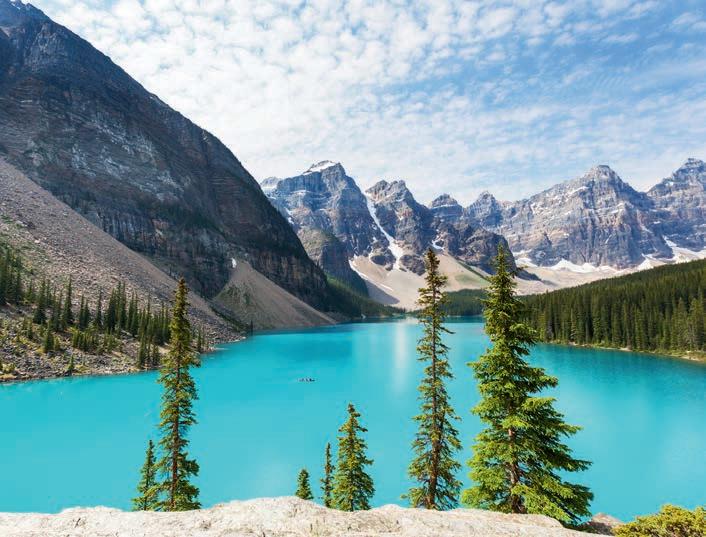
expeditions of ancient shipwrecks and other unique, underwater sites.
It is always best to ask whether a destination is a naturally protected sanctuary or requires special permits. The FSW is a good reference site for information on activities in national wildlife refuges and the endangered animals that live there. To enjoy these areas to their fullest, make sure to find a knowledgeable local tour guide that understands the laws of the land.
Traveling consciously involves personal responsibility toward the environment through individual actions. “You can make a difference,” says David Knight, a professor of tourism management at Colorado State University. “Regenerative travel is not just leaving things the way you found them. It’s a matter of giving more than you take.”
Greenwashing is a corrupt practice by companies that claim to support conscious tourism but fail to live up to their claims. Vetting businesses when planning a trip means delving into third-party research and reports to
check the fine print. Before booking, make sure the ecolodge or eco-touring company being considered has a legitimate certification on their website. The Global Sustainable Tourism Council (GSTC) sets global standards and provides accreditations for destination managers, hotels and tour operators. There are also certifying groups in specific locations, such as the Sustainable Tourism Association of Hawaii, and others that are accredited by the GSTC, like Preferred by Nature.
For tourism operations that have not been certified, the onus is on the traveler. “Check with the local chambers of commerce. They should know who is working toward sustainability and can direct you to those aligned with what you are looking for,” says Claudia Gil Arroyo, an agricultural agent for the Rutgers University Cooperative Extension, in New Jersey. “If a tour operator or destination does not have a clear goal on how they’re contributing to the environment, it is unlikely that they are actually green.”
For tourism to be truly sustainable, it must also be economically viable for local
communities. Economic sustainability ensures that tourism dollars benefit the local economy, creating fair wages, local sourcing and community empowerment, and allowing communities to thrive while preserving their cultural heritage. When traveling, support local, eco-friendly businesses that provide sustainable products.
A good example is agritourism—a vacation stay at a participating local farm—which can provide exciting, hands-on learning experiences. “Get out there. Look for your local growers and check out the services and activities they offer,” says Gil Arroyo. “People have this idea that agritourism is just picking your pumpkins and that’s it, and there’s so much more that can be done at a farm.”
North America is home to many national parks—63 in the United States and 48 in Canada. Here are five exceptional examples that provide a sustainable, eco-friendly vacation experience.

Yellowstone National Park is known for its geothermal features, including the famous Old Faithful geyser. It also has a diverse range of wildlife, including grizzly bears, wolves and herds of bison. This U.S. park has implemented sustainable practices such as renewable energy installations, waste management programs and educational initiatives to promote conservation.
Great Bear Rainforest is a temperate locale on the central and northern coasts of British Columbia, Canada. It is home to a variety of wildlife, including the rare Kermode bear, also known as the spirit bear. The park works closely with First Nations communities, implementing conservation measures to protect biodiversity and support ecoconscious businesses.
Everglades National Park is a unique wetland ecosystem in Florida known as the “River of Grass”. It provides habitat for numerous endangered species, such as the Florida panther and the West Indian manatee. The park employs restoration efforts to
preserve the natural water flow and conserve wildlife, with plenty of opportunities for eco-friendly recreational activities like kayaking and hiking.
Cape Breton Highlands National Park is located on the northern tip of the Canadian province of Nova Scotia. It offers breathtaking coastal views, rugged cliffs and stunning hiking trails. The park implements waste reduction, energy conservation, ecological restoration and educational programs to promote environmental stewardship.
Redwood National and State Parks, in California, are home to the tallest trees on Earth, the majestic coast redwoods. Sustainable eco-practices include trail maintenance and restoration, wildlife protection, interpretation programs to educate visitors about the delicate ecosystem, and conservation efforts to combat climate change and preserve redwood habitat.
Sara Kaplan is an environmentally conscious freelance writer and eco-traveler from Fort Collins, CO.










When Desiree Miller and her daughter visited Rome, they met a couple from Ukraine celebrating their honeymoon. There was talk of a possible war, so they chatted about what that might mean for the newlyweds. Later that day, her daughter asked their Italian driver his thoughts about the impending conflict in Ukraine with Russia, and he said he didn’t like it because it was going to raise gas prices.
“Traveling feels like it shrinks the world,” says Miller, an Atlanta-based travel writer, vlogger, digital streaming producer, co-host of the “Time to Talk Travel” podcast and mother of four. “So many children these days only know what’s in their backyard or their general neighborhood or community, the school they go to, and that’s the extent of their communication with other people. But when I take my daughter to other countries, she gets to experience people from those countries and beyond.”
According to the 2023 U.S. Family Travel Survey released by the Family Travel Association, 80 percent of the respondents indicated that travel helps children see the world from a broader perspective, and 67 percent said their children have become more interested in other cultures because of their travel experiences.
Nasreen Stump agrees that travel expands a child’s worldview. “I want my kids to be curious, because curiosity leads to lifelong
learning,” says the mother of four, a content creator and co-host of the “Time to Talk Travel” podcast. “When you’re in different places, and you see something that’s different, you think, ‘Oh, what’s that?’ and want to learn more about it. It’s the same with similarities.”
Families need not break the bank to enjoy meaningful experiences away from home. Here are a few money-saving travel ideas suggested by Stump and Miller.
• Take shorter trips. As they’ve grown older, each of Stump’s children have developed different interests, so instead of traveling as a family all the time, she takes each of them on one-on-one trips based on their interests. When the family does come together for an excursion, a day trip or weekend getaway is a more affordable option.
• Hop on the internet. Miller’s youngest daughter, now 18 years old, loves using TikTok as a jumping-off point to research

travel destinations, local restaurants, activities and events. Other kids rely on YouTube to get ideas or travel virtually.
• Enjoy a staycation. For families that can’t afford multiple plane tickets, closer-to-home experiences offer fun learning opportunities such as attending a multicultural fair to watch live performances or trying a new cuisine at a nearby restaurant or in a cooking class.
• Take advantage of free or discounted deals. Some libraries offer free passes to museums for library card holders. National parks have free entrance days throughout the year. Check nps.gov for upcoming dates. Flights and hotels are often discounted during the shoulder season—the period between a region’s peak season and offseason. Some credit cards allow members to use their reward points for travel-related discounts.
• Research destinations. Bookmark areas of interest on a Google map or add them to a Pinterest board. Read books, magazine articles and travel blogs about different locales.
• Sample the cuisine. Much can be learned about a culture through food. Experiment with new ingredients by visiting specialized grocery stores that cater to different cultures, or join a snack subscription with selections from around the world.
• Learn a new language. Check out apps like Duolingo, Babbel and Rosetta Stone.
Life is full of challenges, and traveling, especially to foreign ports, can test anyone’s patience. Some of Miller’s children don’t love to travel because of flight delays or other unexpected mishaps. Her youngest is more adaptable. According to Miller, dealing with adversity is part of life, and travel is a great teacher.
Traveling allows kids to get out of their comfort zones, and for many, that sense of adventure is powerful. Whether exploring historical landmarks, taking part in hiking excursions, trying new foods, hearing different languages and dialects, or meeting new people, family travel can help children feel more comfortable, less isolated and see the world in a new light.
Children love to collect souvenirs on their travels as a way to remember their experiences. Miller and her daughter usually buy a piece of jewelry because it is small and doesn’t take up any suitcase space. Stump’s family likes to take lots of photographs and bring home candy from the culture. Rocks or shells, if permitted, also make wonderful keepsakes.
Memories go beyond objects. Multi-generational travel allows children to see their grandparents from a fresh perspective. Kids will remember travel experiences long after they return home. “Travel gives you a real appreciation of the world beyond what you see every day,” Miller says, adding that her daughter has befriended other travelers with whom she still stays in contact.
Megy Karydes is a Chicago-based writer and author of 50 Ways to More Calm, Less Stress: Scientifically Proven Ways to Relieve Anxiety and Boost Your Mental Health Using Your Five Senses.


Embarking on a journey toward healthier eating often begins with a quest for a better understanding of food-labeling and food-sourcing options. For those taking their first steps into the world of healthy eating and sustainable agriculture, terms like grass-fed, organic and regenerative can be both intriguing and perplexing. Understanding these distinctions empowers consumers to make choices aligned with their values and priorities when selecting food products.
“Conventional farming practices involve very heavy equipment, heavy tillage and a lot of inputs—chemical fertilizers, herbicides and pesticides,” says Elizabeth Whitlow, the executive director of the Regenerative Organic Alliance. “Despite its high outputs, conventional farming does not necessarily guarantee nutritious, healthy crops.”
A majority of our meat originates from animal feeding operations (AFOs), where animals are commonly raised in confinement and fed genetically modified grains, as opposed to grazing or foraging in pastures or rangelands. According to the U.S. Environmental Protection Agency, “Manure and wastewater from [AFOs] have the potential to contribute pollutants such as nitrogen and phosphorus, organic matter, sediments, pathogens, hormones and antibiotics to the environment.”
Grass-fed farming focuses on feeding livestock grass rather than grains and, in some cases, allowing them to forage for their food, which is considered more humane than AFOs. Rotational grazing, common in grass-fed farming, contributes to environmental sustainability by promoting soil fertility and biodiversity.
According to a 2019 review published in Nutrition Journal that compared the nutritional profiles of grass-fed and grain-fed beef, scientists from the California State University College of Agriculture noted that grass-fed beef tends to be lower in overall fat and higher in several heart-healthy fatty acids and antioxidants, including omega-3s, conjugated linoleic acid, precursors for vitamins A and E, and glutathione. The authors also note, “To maximize the favorable lipid profile and to guarantee the elevated antioxidant content, animals should be finished [fed before slaughter] in 100 percent grass or pasture-based diets.”
While there is no federal standard for a grass-fed label, third-party certifiers that may lend a level of reliability include the American Grassfed Association and A Greener World. Look for 100 percent grass-fed and grass-finished certification, and remember that a grass-fed label doesn’t automatically mean that the product is organic or regenerative organic.

Established by the U.S. Department of Agriculture (USDA) in 1990, the USDA Organic certification and farming practices focus on soil health, biodiversity and natural methods of pest and weed control, rather than using synthetic inputs like chemical fertilizers, pesticides and herbicides, or genetically modified organisms. According to the USDA, 17,445 certified organic farms operated a total of 4.9 million acres in 2021, amounting to less than 1 percent of U.S. farmland. From 2019 to 2021, sales of organic crops increased 5 percent to $6.1 billion.
A 2019 study published in the journal Environmental Research reported that an organic diet may reduce exposure to a range of pesticides in children and adults. A 2024 review of studies published in the journal Food noted that certain health benefits have been associated with a higher consumption of organic foods, including a reduction in obesity, improvements in blood nutrient composition and a reduction in the development of non-Hodgkin lymphoma and colorectal cancers. Rodale Institute’s Vegetable Systems Trial, a long-term, sideby-side comparison of conventional and organic methods, is designed to analyze nutrient density and explore the links between soil health and human health.
In addition to adhering to the core principles of organic farming, regenerative agriculture sets out to actively rejuvenate and improve ecosystems, nurture soil health, foster biodiversity and promote water retention, with the added benefit of sequestering environmental carbon by returning it to the soil. According to Kegan Hilaire, a smallfarms consultant for Rodale Institute, this type of farming prioritizes human health, farmworker conditions, animal welfare and animal integration into farming methods. Farms and products that bear the Regenerative Organic Certification (ROC) label “meet the highest standards in soil health,

animal welfare and social fairness,” Whitlow explains. As of 2023, 156 farms and about 1.1 million acres have received this certification, which is overseen by the Regenerative Organic Alliance, a nonprofit group of experts in farming, ranching, soil health, animal welfare, and farmer and worker fairness.
Hilaire points out that only about 1 percent of the U.S. population are farmers, fewer are certified organic or regenerative, and many small farms employ these methods without getting the official paperwork. “The best certification is meeting your farmer and deciding if you trust where your food is coming from,” he suggests.
Grass-fed, organic and regenerative organic foods each offer unique benefits, from improved nutrition to environmental sustainability. Every purchase becomes a vote for the kind of world we want to live in. By selecting products aligned with our values, we can collectively drive positive change in the food system and shape a healthier, more sustainable future for generations to come.
Sara English is the owner of Wild Roots Farm Marketing, a digital marketing firm for regenerative farmers and ranchers. Connect at WildRootsFarmMarketing.com.


Liver is a nutrient powerhouse. Opt for grass-fed beef liver from regenerative farms. Sauté with onions for a traditional dish bursting with flavor and health benefits.
YIELD: 2 SERVINGS
1 lb grass-fed beef liver
2 Tbsp grass-fed ghee
2 large onions, sliced
2 garlic cloves, chopped
Salt and pepper to taste
1 Tbsp grass-fed butter
Fresh parsley, chopped, as garnish
Cut the liver into strips or cubes and season both sides with salt and pepper. Heat ghee in a large skillet over medium heat. Add the onions and cook for about eight minutes until softened and lightly browned. Add the garlic to the onion mixture and cook for another minute. Transfer the onion mixture to a plate and set aside.
Increase heat to medium-high, then add butter to the same skillet used for the onions. Once butter is melted, add liver pieces in a single layer, making sure not to crowd them in the pan. Cook for four minutes per side until cooked through, longer for more well-done liver. Return onion mixture back to the pan with liver. Stir everything together and season with additional salt and pepper, if desired. Serve hot with fresh parsley as garnish.
Recipe courtesy of Sara English.
This easy, slow-cooker recipe fills the home with delightful aromas while providing a nutrient-dense broth. Using organic chicken supports farming practices that prioritize animal welfare and environmental sustainability.
YIELD: 8 SERVINGS
1-2 lbs organic whole chicken bones (leftovers from a whole chicken roast is perfect)
1 onion, roughly chopped
3 carrots, roughly chopped
3 celery stalks, roughly chopped
6 cloves garlic, smashed
2 Tbsp apple cider vinegar
2 tsp black peppercorns
1 tsp salt
Optional: fresh herbs such as parsley or thyme for extra flavor
Place the chicken bones in a large six-quart slow cooker. Add the vegetables, herbs (if using), garlic, apple cider vinegar, black peppercorns and salt on top of the bones and mix to combine. Fill the slow cooker with filtered water until the ingredients are submerged. Cover with the lid and set to low heat for 12 hours.
Once done cooking, let it cool for about 45 minutes before straining through a fine mesh strainer into a large bowl. Discard the solids. The liquid should be thick and gelatinous. Once cooled, transfer to jars or other containers, labeled with the date and contents, and store in the refrigerator for up to five days or freeze for up to three months. Reheat before serving.
Recipe courtesy of Sara English.

This frittata is bursting with farm-fresh goodness. Savor the superior taste and nutrition of organic eggs, supporting regenerative farming practices with every delicious bite.
1 lb organic pork breakfast sausage, chopped
1 Tbsp grass-fed ghee or butter
1 onion, diced
2 cloves garlic, minced

2 cups spinach leaves, chopped 8 large organic eggs
½ cup grass-fed cheddar cheese, shredded Salt and pepper to taste
Preheat the oven to 350° F. In a large skillet on medium heat, add ghee or butter and onions. Cook until onions have softened, about four minutes. Add minced garlic and cook for an additional minute. Add in chopped spinach leaves, stirring until wilted down, about one minute.
Place cooked mixture into a greased nine-by-13-inch baking dish and spread out evenly. Place sausage around edges of the pan and in-between gaps of the spinach-onion mixture for an even layer of sausage throughout the pan.
Crack eight eggs into a medium bowl and lightly beat together using a whisk or fork. Pour eggs over top of the sausage-spinach-onion mixture, ensuring all ingredients are covered in egg evenly and completely. Sprinkle with shredded cheese. Place dish in oven and cook for 25 minutes or until eggs are set through the center and golden brown on top.
Recipe courtesy of Sara English.

Long a staple of European travel, agritourism is growing in popularity in the United States, as concrete-weary urbanites seek out a taste of country living and a way to support small-scale farms. The concept broadly covers any activity linking agriculture with tourism, and it takes as many forms as there are farms. Farm-stay options run the gamut from helping with farm chores like feeding chickens and collecting eggs to structured classes on weaving, soap making or beekeeping.
“Living in towns and cities, most Americans are very disconnected from nature and agriculture. Farm stays are helping to make an important urban-rural connection,” says Scottie Jones, founder of Farm Stay USA, an association connecting travelers with working farms and ranches that
offer hands-on opportunities and overnight accommodations.
Since 2007, Jones has operated her own farm stay, the 70-acre Leaping Lamb Farm, in Alsea, Oregon. She has been surprised at many guests’ “agricultural illiteracy”, underscoring the importance of the educational experiences that farm stays like hers offer. “I used to send guests off to graze in the garden alone, but then realized many people don’t know what carrots look like in the field,” says Jones. “I would get questions like, ‘Don’t you need a brown cow to make chocolate milk?’”
More than one in three guests to Leaping Lamb Farm return for subsequent stays, a very high retention rate for the lodging industry. “We get to watch families grow up
as they return to the farm year after year. That has a real impact, as we need the next generation to get involved in farming and food systems,” Jones notes.
Justin Bolois, of Los Angeles, got introduced to agritourism in Tuscany, later seeking out the farm experience closer to home. “We had been living in New York City at the time and came to value the expansive countryside being in Italy,” he says. “The family, which ran a vineyard, would cook incredible meals for us. Vacations are great when they mirror the experience of living in a place, and agritourism is one of the closest ways to access that.”
Bolois and his wife later discovered Straus Home Ranch, in Marshall, California, and fell in love with the place and its people so

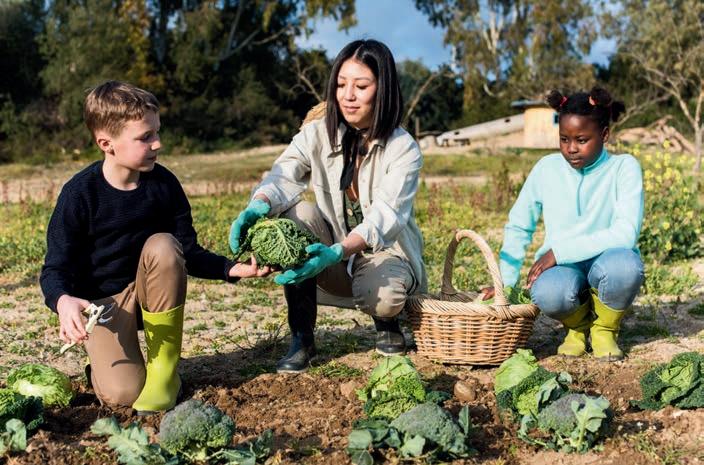
deeply they hosted their wedding there. The ranch was founded by a pair of pioneers in organic farming and land conservation in Marin County, and it was later revitalized to include a farm stay by siblings Vivien, Miriam and Michael Straus after their parents’ deaths. “You can tell that Vivian and Michael not only care about what they do, they also care about you, and about you enjoying their life mission. That’s a very special bond to develop with an agritourism owner,” Bolois says.
The ranch features special touches, including a beautifully equipped kitchen to shuck local oysters or to host private chefs for farm-fresh meals served on a handcrafted table made of reclaimed redwood from their old hay barn. There is no cellphone reception on the ranch, encouraging guests to kayak, hike, birdwatch and stargaze.
“After being cooped up during COVID, people want to see wildlife and biodiversity
Reset and Rejuvenate at the ENERGIZE YOUR SOUL

again. People are aching to disconnect from their screens and reconnect with nature— what we call ‘dirt therapy’,” says Ashley Walsh, president and founder of Poconos Organics, one of the largest Regenerative Organic Certified farms on the continent, sprawling across 380 acres in Long Pond, Pennsylvania.
Walsh built the boutique resort, The Village at Pocono, with her grandfather when she was 25 as a sister destination to the farm. The accommodations feature full kitchens where guests can cook a cornucopia of produce fresh from the fields. Visitors can enjoy luxurious amenities on site, then pop over to the farm to attend hands-on cooking classes, wellness retreats, farm tours and more.
Beyond connecting with rural life, farm stays are a meaningful, mutually beneficial way for farmers and consumers to reconnect on a personal level. “Agritourism puts a face to farming. We want to educate people so they can make better choices in food and get to experience what really fresh food tastes like,” Jones says.
Connect with Washington, D.C., freelance writer April Thompson at AprilWrites.com.

Sedona Spiritual Retreat April 12-15, 2024!
Your One-Stop Wellness Center and Holiday Gift Shop!!
Energy Healing and Chakra Balancing
Psychic Readings and Mediumship Sessions
Personal and Home Cleansings
Reiki Certification and Psychic Development Courses
Practical Workshops, and Guided Meditations
Amazing Gifts: Crystals and Pendulums, Jewelry, Rosaries, Malas, Essential Oils, Candles, and MORE!
https://DimensionsofHeavenandEarth.com
11108 N. Frank Lloyd Wright Blvd., Suite #E-16, Scottsdale, AZ 85259
15% OFF WITH THIS AD
Hitting the trails offers something for everyone, whether it’s hiking for the day or backpacking and roughing it overnight in remote areas. According to the 2022 Outdoor Participation Trends Report, getting up close and personal with Mother Nature is more popular than ever in the States, with 58.7 million hikers and 10.3 million backpackers in 2021.
With health benefits like stronger heart health, a lower risk of respiratory ailments and a boost in mental health, hiking is a fun way to stay fit, but prepping for the
physical demands of local trails or wilderness is essential for both endurance and injury prevention. “A strong, well-conditioned body is your best ally when crossing rough terrain and overcoming unexpected challenges,” says Larry Pringle, a certified fitness trainer and founder of Perfect Fit Training and Nutrition, a holistic training hub for busy entrepreneurs.
With great diversity of trail challenges to choose from, hiking is doable for most people. “If you're generally healthy, no

matter your age, you can complete any hike you’ve always wanted to do,” says Fit for Trips hiking coach Marcus Shapiro. “I have had the privilege of working with many individuals who are over 70 years old, and they have successfully reached the summit of Mount Kilimanjaro and the base camp of Mount Everest.”
Shapiro estimates an eight-to-12-week training regimen for younger hikers and 12 to 16 weeks of preparation for older enthusiasts. For the best fitness outcome, he underscores the importance of choosing the right exercises for the sport, explaining, “Every recreational activity requires a unique training approach for best results. It’s called ‘specificity of training’.” His Fit for Trips training includes inclines, stairs, lunges, distance and high-intensity interval training.
To meet the challenge of walking for hours at a time, cardiovascular conditioning like jogging, brisk walking, time on the treadmill or cycling is a good place to begin. Adding a heavy backpack of survival supplies to the equation requires extra strength in the legs, core and upper body and is best achieved through squats, planks, lunges and push-ups. Full body stretching with emphasis on hamstrings, quadriceps, hips and back are also essential.
To avoid weekend warrior injuries, it is wise to adopt a hiker’s mentality in everyday life. “Start slow and find ways to incorporate more movement into your daily life,” advises Maggie Peikon, communications director of American Hiking Society. “Skip the escalator or elevator and opt for taking the stairs instead. You’ll be glad to have gotten those extra steps in when you’re taking on uphill climbs out on the trail.” She also hails the perks of biking to the store with a backpack or walking to the park for a lunch break if it is safe and feasible. Most of all, Peikon stresses the value of going slow and listening to the body.

The benefits of getting outdoors goes beyond physical health and spills over into positive impacts on the environment. Peikon muses, “When we hike, our connection to the places we explore grows. When we feel connected to a place—whether a trail or a favorite spot outdoors—we are more likely to step forward to protect the environment and change our behavior to lessen our negative impacts.”
For Pringle, having a strong body carries over into other areas of living. “Getting ready for the trails means getting ready for life. Before you hit those paths, hit the gym. It’s not just about reaching mountaintops; it’s about reaching for your best self.”
June 1 is National Trails Day, a day of service for hometown trails and the people that love them. Promoted by the American Hiking Society, public events throughout the country offer opportunities for tens of thousands of participants to come together in partnership to advocate for, maintain and clean up public lands and trails. To learn more and find a nearby event, visit AmericanHiking. org/national-trails-day.
Check out these sites for detailed information about hometown trails that match the hiker’s level of ability.
• AllTrails.com
• FaroutGuides.com
• HikingProject.com
• Sturdy, appropriate footwear—from trail shoes for moderate terrain to heavy hiking boots for strenuous climbs
• Nutrient-dense food
• Rain gear and dry-fast layers for changing weather
• Means to start an emergency fire
• Whistle
• Flashlight
• First-aid kit
• Multi-tool or knife
• Sunscreen, sunglasses and sun-protective clothing
• Lightweight protection from the elements
Marlaina Donato is an author, visionary painter and composer. Connect at BluefireStudio.art.


According to the Parkinson’s Foundation, more than 10 million people worldwide and nearly 1 million Americans are living with Parkinson’s disease (PD). Every year, nearly 90,000 people in the U.S. are diagnosed with this ailment, which causes the gradual loss of dopamineproducing neurons in the brain. Symptoms that develop slowly over years include tremors; stiff muscles; a slow, shuffling gait; and difficulties with movement and speech.
There is no cure for PD, and by the time a patient is diagnosed, they may have already lost 60 to 80 percent of their dopamine-producing cells. According to Kenneth Sharlin, a board-certified neurologist and certified functional medicine doctor, the first line of defense for PD is levodopa (L-Dopa), a pharmaceutical that is converted to dopamine in the body. “Unfortunately, natural
strategies don’t get a lot of research, so no supplement has been shown to effectively treat the disease,” he asserts. “Mucuna pruriens, a tropical legume that grows in Africa, Asia and the Pacific Islands, naturally contains levodopa, but studies have shown it to be unreliable.”
Dopamine is a neurotransmitter that plays a role in controlling memory, mood, sleep, learning, concentration and movement. “If the car doesn’t have gas, then you can’t drive it,” explains Sharlin. Once a patient is taking levodopa to bring dopamine levels up, complementary strategies can be employed to help manage PD symptoms by as much as 73 percent, according to a panel of doctors participating in The Parkinson’s Solutions Summit. Exercise, sleep and even intimacy with a partner can all be managed well once the car has “gas” to drive it.


According to Sharlin, the number one strategy for PD patients to maintain their motor function is exercise such as bicycling, chair yoga, movement classes in warm water pools, Pilates and dance. A meta-analysis published in Gerontology and Geriatrics analyzed 15 randomized controlled trials

involving 498 participants in several countries to investigate the health impacts of self-directed physical activity (SDPA) on patients with early and mid-stage PD. The study examined the effects of moderate-intensity exercises, including aerobics, dance, strength training, flexibility exercises and Nordic walking. The researchers found that the SDPA significantly enhanced gait function, balance, mobility, function and postural control.
Monitoring gut function is very important for patients with PD, as constipation is very common,” states Trupti Gokani, a board-certified neurologist, health and mindset coach, and Ayurvedic expert. Improving gut function with the help of key nutrients from vegetables, fruits, clean protein, nuts and seeds, olive oil, herbs and spices has been shown to slow the progression of the disease. It is best to choose organic when possible, as that will decrease the exposure to brain-toxic chemicals. A gluten-free diet has also been found to improve PD symptoms.
Sharlin recommends an antioxidantrich diet packed with polyphenols, along with green tea that contains catechins called epigallocatechin-3-gallate (EGC G), a natural antioxidant with neuroprotective properties.
Anxiety linked to PD can worsen the symptoms,” Gokani points out. Chronic stress is a risk factor for PD, because it elevates the hormone cortisol, which can interfere with neuronal plasticity and damage dopamineproducing neurons in the brain.
Incorporating deep breathing, meditation and other relaxation techniques is integral to improving the patient’s quality of life. According to Sharlin, “Mindfulness-based stress reduction techniques to self-regulate have a positive impact in regulating Parkinsonism.”
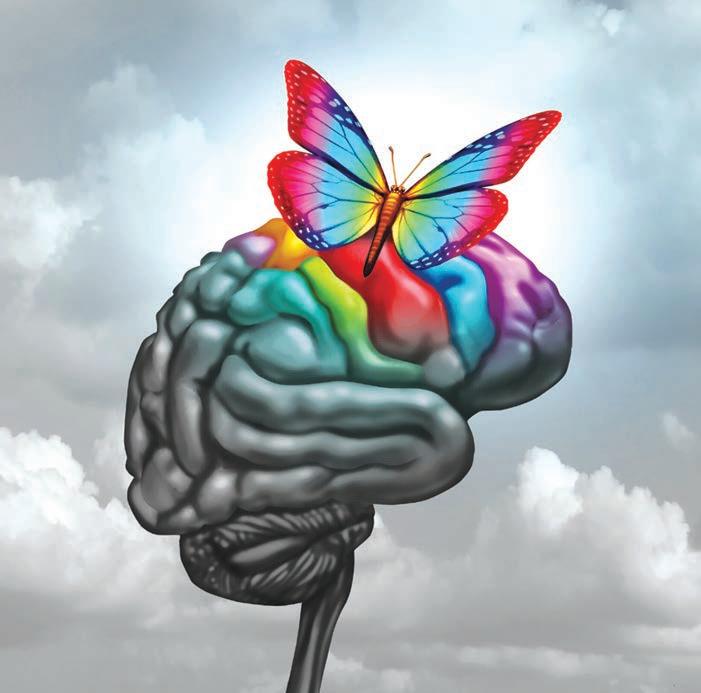
When a patient comes to his office exhibiting PD symptoms, Sharlin now has a new way to confirm a PD diagnosis by taking a small tissue sample and sending it to the lab to look for a neural protein called alpha synuclein, which is associated with PD. In a 2023 National Institutes of Health study involving 428 people with PD and 120 control volunteers, this skin biopsy was found to be very accurate, with 92.7 percent sensitivity.
According to Sharlin, deep brain stimulation (DBS) is a well-researched and well-developed treatment for PD. The surgical therapy involves implanting electrodes within areas of the brain to interrupt irregular signals that cause movement-related symptoms. A 2019 retrospective study of 400 patients that underwent DBS implantation found that 75
percent of the participants felt the procedure provided symptom control.
Focused ultrasound is another PD tool, using ultrasound beams to destroy areas in the brain cells that are causing movement problems. This procedure is permanent and can be done on only one side of the brain, so it helps symptoms on only one side of the body. Treatment to both sides could cause speech, swallowing or memory problems. Sharlin notes that the results from focused ultrasound are no better than DBS and involve more intense intervention. Also, not all Parkinson’s patients are good candidates for this procedure.
Madiha Saeed is a holistic, functional and integrative doctor in Naperville, IL, and director of education for Documenting Hope and KnoWEwell.
We might be tempted to bring plastic forks to a picnic or succumb to the expediency of prepackaged chips for our kids’ lunches, but single-use plastics wreak havoc on the environment and human health. Although marketed as disposable, most of these fossil fuel-derived, non-biodegradable items are not being recycled, so they languish indefinitely in landfills or pollute our waterways in the form of microplastics. “Plastic pollution has been linked to everything from infertility and cancer in humans to severe injury and death in wildlife,” says Veena Singla, senior scientist for the National Resources Defense Council, in New York.
Roughly 30 percent of garbage in the U.S. comes from single-use plastics,” says Shawn Flood, a partner and vice president of operations and customer care at SBC Waste Solutions, a waste collection company based in Broadview, Illinois.
Marketed for their inexpensive, lightweight, flexible and impermeable qualities, we have come to rely on plastic grocery bags, shrink wrapping, drink bottles, stickers, K-cups, straws, gloves, takeout containers and other throwaway products. According to the U.S. Environmental Protection Agency, approximately 380 billion plastic bags and wraps are
used annually, which require 12 million barrels of oil to make.
Many plastic products that could be recycled are still getting tossed into the landfill.
“The biggest problem is contamination,” Flood explains. “When someone puts a plastic milk jug into the recycling bin and there’s still milk inside of it, that ends up getting trashed. Those products become single-use plastics when consumers don’t do the correct job of washing recyclables.”
Over the past few decades, countries including Costa Rica, France and Italy, as well as some U.S. states, have introduced

laws that prohibit or tax single-use plastics. “They are banning single-use plastics in California,” Flood notes. “Everything is paper. Basically, you cannot find a plastic straw,” Flood notes.
Other states following the trend to ban certain plastics include Connecticut, Delaware, Hawaii, Maine, New York, Oregon, New Jersey and Vermont. The U.S. Department of the Interior is phasing out single-use plastics on public lands, including national parks, by 2032. A Los Angeles County public works study reports that a ban on plastic bags in San Jose has led to reductions of plastic bags found in storm drains (89 percent), rivers (60 percent) and residential areas (59 percent).
Some states, however, have chosen to protect the continued use of these items. For example, Indiana passed a bill in 2016 prohibiting city and county officials from taxing or restricting the use of disposable plastic bags by certain retailers. Similar laws have been enacted or proposed in Wisconsin, Idaho, Florida and Arizona.
New single-use products are continually being introduced that claim to be better for the environment, but consumers need to be cautious of such promises, says Brandon Leeds, co-founder of SOFi Paper Products, based in Miami, Florida. “There’s a tremendous amount of greenwashing going on,” he explains. “They stamp the products as ecofriendly. For example, some agave straws are predominantly made with plastic and just mixed with agave.”
SOFi manufactures straws and drinking cups that are 100 percent paper, 100 percent plastic free and 100 percent compostable. They sell to 4,000 businesses in the U.S., including mom-and-pop coffee shops, high-end restaurants, convenience stores and popular food chains. Leeds remarks, “Our company mission is to educate people.”
Alternatives to plastic, such as cotton or paper bags, also have environmental impacts, and the jury is out on whether single-use plastic bans can really improve the environment, according to Enhesa, a company that helps businesses with regulatory compliance.
A study commissioned by the American Recyclable Plastic Bag Alliance, a group that represents U.S. manufacturers and recyclers of plastic bags, found that New Jersey’s ban resulted in a 60 percent decline in bag volume. However, the study also found six times more woven and non-woven polypropylene plastic was used to produce reusable bags, which are not widely recycled. The non-woven bags consume 15 times more plastic, and their production generates five times the greenhouse gas emissions per bag than the thin plastic bags.
Flood says one solution may be “to go back to the early days when glass was used for everything, and it could be used over and over.” Several states have created container deposit laws related to glass and plastic. In Oregon, for example, nearly every business that sells certain beverages in redeemable sealed containers is legally required to accept returned containers that can be recycled or reused.
The bottom line, Flood asserts, is that people need to move away from a throwaway mentality and stop using single-use plastics. “The consumer has the power to do anything,” he says. “When I go on vacation and I’m walking on the beach, I’m picking up pieces of plastic everywhere.”
Sheryl DeVore is a frequent contributor to national and regional publications and has authored six books on science, health and nature. Learn more at SherylDeVore.wordpress.com.

Pets are part of our family, and ensuring their comfort during travel speaks volumes about our bond with them. Travel, whether by car, train or plane, can significantly affect pets, leading to symptoms of anxiety such as excessive barking, whining, pacing and, in some cases, aggression or withdrawal. To address a pet’s anxiety, it is critical to understand their perspective. Travel disrupts their feeling of safety. Mitigating this disturbance with natural and comforting interventions ensures that such journeys can evolve into harmonious and enriching adventures.
Holistic veterinary medicine offers a range of solutions that address travel-induced anxiety in pets. By focusing on natural remedies that promote calmness, we can avoid the side effects often associated with pharmaceuticals.
• Hemp Oil: Anecdotal reports from dog owners suggest that cannabidiol (CBD), which is abundantly found in hemp oil, can significantly aid in managing anxiety. These observations are supported by a study conducted at the Cornell University College of Veterinary Medicine in which 83 percent of participating dogs demonstrated a decrease in stress or anxiety-related behaviors after consuming CBD chews prior to a stressful event.
• Herbal Supplements: Herbs like chamomile, valerian root and passionflower have been used for centuries to relieve anxiety in humans, and are equally as effective in pets. They can be administered in the form of treats or capsules. Lavender (Lavandula angustifolia) and chamomile (Anthemis nobilis) have been reported to enhance relaxation behaviors such as resting and sleeping, and to diminish dog barking in rescue shelters.

• Aromatherapy: When diffused in a pet’s travel space, essential oils such as lavender and frankincense can create a serene environment and significantly reduce stress and anxiety. Choose therapeutic-grade oils and verify with a veterinarian that they are safe for pets, as certain essential oils can be harmful to our furry friends.
• Acupressure: By applying pressure to specific points on a pet’s body, we can help release tension and encourage a calm state. It is especially useful for pets that are less amenable to oral supplements, offering a noninvasive path to relaxation. Pet owners can be trained in this modality by a veterinarian or acupressure therapist that specializes in treating pets.
Dr. Mary Burch, a certified applied animal behaviorist, emphasizes the value of taking preparatory steps as early as possible before the family embarks on a journey. Introducing a dog to the car well before a trip, for example, can significantly help make them more comfortable. This method involves gradually acclimating the pooch to the vehicle in a series of steps—from simply spending time in a parked car to taking

Check out the latest events at naturalaz.com/calendar

short drives. Such preparatory measures allow pets to become familiar with the environment of a vehicle, associating it with positive experiences and rewards, thereby easing their anxiety and making travel a more enjoyable experience for all.
• Start early. Gradually acclimate a pet to their travel carrier and intended mode of transportation.
• Maintain a routine. As much as possible, stick to the pet’s regular feeding and exercise schedule to provide a sense of normalcy.
• Stay calm. Pets often pick up on their owner’s emotions; maintaining a calm demeanor can help reassure them.
• Consult a holistic veterinarian: Before introducing any new supplement or remedy, consult with a professional to ensure it is appropriate for a pet’s health status and needs.
Ruth Roberts is an integrative veterinarian and holistic health coach for pets, as well as the creator of The Original CrockPet Diet. Learn more at DrRuthRoberts.com.

Connecting you to the leaders in natural healthcare and green living in our community. To find out how you can be included in the Business Directory, email PhoenixAds@NaturalAZ.com to request our media kit.
MacKenzie Kalt, Owner/Director
4050 E Greenway Rd, Ste 5, Phoenix 480-594-5052
MyLeadingEdgeWellness.com

Providing some of the most advanced natural technologies for those struggling with chronic pain, injuries, stress, migraine headaches, PTSD, insomnia, Lyme disease, autoimmune disorders, skin conditions, and much more. Visit our website to learn more. See ad, inside front cover.
2701 N 7th St, Phoenix
602-307-0888
NaturalMedicineDetox.com

We offer a wide range of services that can help just about everyone at affordable prices. We also accept insurance for acupuncture, including Medicare. Please take a look at our website to learn about our services, gifted practitioners, and insurance information and form to see if your plan covers acupuncture. See ad, page 11.
WATERCOLOR ART CLASSES
Allura Westly
3611 E Sunnyside Dr, Phoenix AlluraWatercolor@cox.net
602-469-0524 • AlluraWaterColor.com

Allura Westly, master teacher, opens her sanctuary studio to all levels, beginner to advanced. Learn fluid color technique, drawing and composition. Small class of eight students. No talent required, just a desire to create.


Denise Cahill, CNC
16810 Avenue of the Fountains, Ste 114 Fountain Hills
480-477-8886
ModernWellnessScottsdale.com

Modern Wellness offers comprehensive biofeedback scans to test for imbalances within the body. The scan immediately identifies the root cause of any symptom or health condition along with specific remedies and customized action plans. A holistic approach to health is discovering and eliminating the root cause of any issue to truly heal.
Dr. Roxane Zamora, DC
822 E Union Hills Dr, Ste 22, Phoenix 623-582-8951
ImagineWellnessChiropractic.com/us

At Imagine Wellness Chiropractic Center, our mission is to provide chiropractic care to increase health, wellness and healing for you and your family. We are focused on corrective chiropractic care and offer nutritional consultations to bring your health to a whole new level! See testimonials on our website. See ad, page 33.
Valleywide Service • 480-994-4988
BennettsCarpetCleaningAZ.com

Eco-friendly carpet and upholstery cleaning. Featuring organic cleaners and odor removal products derived from renewable seed and vegetable sources. No perfumes, solvents or other hazardous products. No phosphates. Products also available for in-home use. Licensed and owner operated since 1974. See ad, page 21.
5705 N Scottsdale Rd, Ste D-110, Scottsdale 480-948-0560
MillDental.com

Millennium Dental offers more than 44 years’ experience in holistic dentistry, including advanced general dentistry
Certified by the IABDM. See ad, page 9.
Dr. Michael Margolis and Dr. Stephen Kovar 2045 S Vineyard Rd, Ste 153, Mesa 480-833-2232 • MyDentistAZ.com

A holistic and biological approach to your dental needs an d overall health. Biocompatible dentistry, esthetic dentistry lumineers/ veneers, family dentistry and much more. See ad, page 3.
6930 E Chauncey Ln, Ste 100, Phoenix 602-775-5120 • MyNaturalDentist.com




The doctors at Natural Dental Partners take the time to listen to your concerns and use their extensive experience to help you achieve better health. Using the latest technology (such as low-dose 3D imaging, CEREC, lasers, PRF, ozone and treatment of sleep disorders), they believe in a team approach to help you achieve your healthcare goals. Check out MyNaturalDentist.com or ABreathOfHealth. com to see how they can help you. See ad, pages 5 and 19.
BUTTERFLY HOLISTIC CENTER
Melanie Icard, NMD
1430 E Missouri Ave, Ste B127, Phoenix 602-353-7712
•
ButterflyHolistic.com

Dr. Icard specializes in biological medicine, peptides, PRP, aesthetics and ozone therapy. Her offerings include holistic anti-aging medicine, pain reversal, natural and traditional aesthetics, ozone therapy, holistic ketamine therapy, and sexual health regeneration. See ad, page 11.
15215 S 48th St, Ste 154, Phoenix
Kim@IntuitiveKim.com
IntuitiveKim.com

Kim is an Intuitive and Healing Touch Certified Practitioner offering guidance when you feel out of alignment with your authentic self. Stress, fear, anxiety and grief/loss throw us off balance, making it challenging to access inner wisdom. Sessions include reading and clearing your energy field; and simple, practical selfhealing tools to keep you balanced and grounded. See ad, page 11.
931 E Southern Ave, Ste 106, Mesa 480-306-7321
RealignYourLifeAZ.com

Realign Your Life Wellness Center features the Harmonic Egg—sound and light therapy for physical, emotional and spiritual energy healing. Other services include The Body Code, Quantum Touch, sound baths and Higher Guidance Life Coaching. See ad, page 30.
IMAGINE HYPNOTHERAPY
Carmen Moretti, CMS-CHt, FIBH
8900 E Pinnacle Peak, Ste 200, Scottsdale
602-380-3631

Over the past 13 years, Carmen Moretti has helped people access that power within themselves to break free and heal from patterns of sadness, stress and overwhelm and live a life that they are proud of and that they love. See ad, page 15.
NUTRITION REVIVED
Ute Haahr, Integrative Nutrition Coach
480-206-0752
Ute@NutritionRevived.com
NutritionRevived.com

I help women with metabolic health issues balance their hormones, lose weight and reclaim their inner power. I specialize in helping women with involuntary childlessness through my integrative nutrition and mindset program. See ad, page 29.
NORTHWEST EXTERMINATING Organic Program Experts
623-516-2220
NWExterminating.com

We have organic alternatives available with mul tiple programs to meet your needs. Ask us about our year-round pest protection, SMART ecofriendly rodent control 24/7 home protection, and desert guard home sealing service. See ad, page 21.
ASAM, Sh Reiki, HTAP Communicator, Healer, Counselor 602-317-1543
1CritterDoc@gmail.com
SpiritAnimalWisdom.com

With a gentle healing touch, Andrea provides wellness counseling, energy healing, animal communication, and intuitive counsel for pets and their people.
6102 N 16th St, Phoenix 480-737-0867
KayaHolistic.com

Kaya Holistic is a lifestyle boutique that carries a curated selection of handcrafted, sustainable goods and botanical wellness products. From cultivators and formulators to makers and artisans, we are committed to supporting companies and industries that make a significant impact in our world through sustainable practices and conscious choices. See ad, page 15.
Jennie Richau
Associate Broker and Certified Feng Shui Consultant, Brokers Hub Realty 602-292-0622 • WooWooAgent.com

A unique and holistic way to buy or sell! Utilizing Feng Shui and various "woo woo" methods to find you a home where you will thrive or sell your home quickly, for the highest value. See ad, page 25.

13291 W McDowell Rd, Ste E-1, Goodyear 623-935-0501
TJHofgard@gmail.com
LavendarMoonStore.com

Make a Difference Doing What You Love! Become a Professional Holistic Health Energy Practitioner. Learn the most effective and comprehensive energy modality and techniques with proven results. Become trained in the body’s many energy systems; learn how to energy test, clear, restore, detect and correct energy imbalances. Levels I, II and III.
1538 E Southern Ave, Tempe 480-994-9244
Info@swiha.edu • swiha.edu

Nationally accredited college offers holistic health and wellness degrees, diplomas, certificates of excellence, continuing education and personal development, oncampus and online. Financial aid available. See ad, outside back cover.
11108 N Frank Lloyd Wright Blvd, Ste E16 Scottsdale
732-832-1036
DimensionsOfHeavenAndEarth.com

Dimensions of Heaven and Earth is Scottsdale’s exciting, new one-stop Spiritual Experience: a center of healing and insight combined with a store full of unique gifts from local artisans. With training and tools for your personal development, we are excited to help you take your spiritual journey to new levels! See ad, page 27.
The Path of Spiritual Freedom
1-877-300-4949 • EckankarArizona.org
Eckankar.org • HearHU.org
Facebook.com/EckankarArizona

Eckankar is an active, individual, creative spiritual practice. A companion and roadmap for your journey home—to the heights of Self-Discovery and GodDiscovery, and beyond. Come along and discover the most secret part of yourself. The key to spiritual freedom lies within you. Explore life as a Soul Adventure. See ad, page 11.
4105 N 20th St, Ste 115, Phoenix 480-442-5020
SummitLighthousePhoenix@gmail.com
SummitLighthousePhoenix.org

Dedicated to sharing Saint Germain’s Violet Flame. All faiths welcome. Learn how you can become a modern day mystic. We are dedicated to sharing the Teachings of the Ascended Masters® to help you bring in joy and peace to the world. Learn what the requirements are to make your ascension. See ad, page 29.

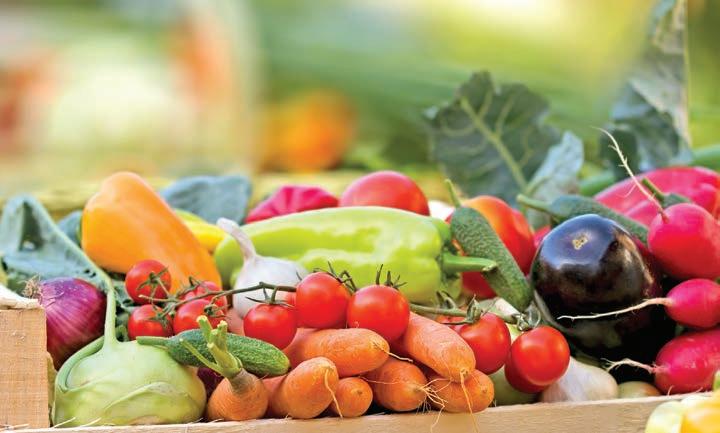
NOTE: Please check market websites and ArizonaCommunityFarmersMarkets.com for more information on days and hours, and any restrictions.
Ahwatukee Farmers Market
4700 E Warner Rd, Phoenix
Sundays Oct-May 9am-1pm
Jun-Sep 8am-11am
Facebook.com/AhwatukeeFarmersMarket
Care 1st Farmers Market
328 W Western Ave, Avondale
Tuesdays Jul-Oct 8am-noon
ArizonaCommunityFarmersMarkets.com
Carefree Farmers Market
1 Sundial Circle
Fridays Oct-May 9am-1pm
Jun-Sep 8am-11am
Facebook.com/CarefreeFarmersMarket
Downtown Chandler Farmers Market
3 S Arizona Ave
Saturdays Oct-May 9am-1pm
Jun-Sep 7am-10:30am
Facebook.com/ChandlerFarmersMarket
Downtown Mesa Farmers Market
1 E Main St
Saturdays 8am-noon
dtMesaFarmersMarket.com
Downtown Phoenix Farmers Market
721 N Central Ave
Saturdays Oct-Apr 8am-1pm
May-Sep 7am-11am
DowntownPhoenixFarmersMarket.org
Gilbert Farmers Market
222 N Ash St
Saturdays Oct-Mar/Apr 8am-noon
Apr/May-Sep 7-11am
GilbertMarket.com
Sun City Farmers Market
16820 N 99th Ave
Thursdays Oct-May 9am-1pm
Facebook.com/Sun-City-Farmers-Market631299790224049
The Capitol Farmers Market
1700 Adams St, Phoenix
Thursdays 10:30am-1:30pm
ArizonaCommunityFarmersMarkets.com
Uptown Farmers Market
5757 N Central Ave, Phoenix
Wednesdays Oct-Apr 9am-1pm & May-Jun 8am-noon
Saturdays Nov-Apr 9am-1pm & May-Oct 8am-noon
UptownMarketAZ.com
Verrado Community Farmers Market
High Street Farmers Market
5415 E High St, Phoenix
Sundays Oct-May 10am-1pm
Facebook.com/Farmers-Market-on-HighStreet-2244771575799425
Mommas Organic Market
Arrowhead Farmers Market
7780 W Arrowhead Towne Center, Glendale
Saturdays Oct-May 9am-1pm | Jun-Sep 8-11am
Facebook.com/Getlocalazfarmersmarkets GetLocalArizonaEvents.com
Mommas Organic Market
Glendale Farmers Market at Cabela’s
9380 W Glendale Ave, Glendale, AZ 85305
Sundays Sep-May 10am-2pm | closed for summer
Facebook.com/Getlocalazfarmersmarkets GetLocalArizonaEvents.com
Old Town Scottsdale Farmers Market
3806 N Brown Ave
Saturdays 8am-1pm
ArizonaCommunityFarmersMarkets.com
Power Road Farmers Market
4011 S Power Rd, Mesa
Monday-Saturday 9am-5pm | Sunday 9am-4pm
PowerrdFarmersMarket.com
Roadrunner Park Farmers Market
3502 E Cactus Rd, Phoenix
Saturdays Oct-May 8am-1pm | Jun-Sep 7-11am
Facebook.com/RoadrunnerParkFarmersMarket
Singh Meadows Farmers Market
1490 E Weber Dr
Fridays, Saturdays & Sundays 8am-2pm
Facebook.com/SinghFarms



N Market Pl & W Main St, Buckeye
Sundays Oct-Jun 9am-1pm
Facebook.com/VerradoCommunityFarmersMarket
Farmers Market in Old Town Square
1042 N Main St, Cottonwood
Wednesdays 4-8pm (check months/times throughout year)
Facebook.com/FarmersMarketatOldTownSquare
Flagstaff Community Farmers Market
211 W Aspen Ave, City Hall Parking Lot
Sundays May-Oct 8am-noon
FlagstaffMarket.com
Prescott Farmers Market
Dignity Health, YRMC
900 Iron Springs Rd, Miller Valley Lot
Saturdays 7:30am-noon
PrescottFarmersMarket.org
Sedona Community Farmers Market
Wells Fargo Bank Parking Lot
2201 W State Rte 89A, West Sedona
Sundays May 14-Oct 15 8am-noon | Sundays Nov 5-Apr 28 11am-3pm
Sedona-Farmers-Market.com
Verde Valley Farmers Market
Hollamon St and Main St, Camp Verde
Saturdays May-Oct 8-11am
Facebook.com/VerdeValleyFarmersMarket
Windmill Park Farmers Market
9950 E Cornville Rd, Cornville
Thursdays 2-6pm (check months/times throughout year)
Facebook.com/WindmillParkFarmersMarket





